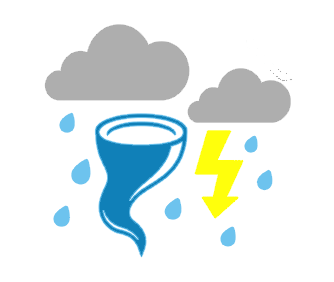hub
Small Business Emergency Preparedness
Now that severe weather season is underway for large portions of the United States, small businesses need to evaluate, and in some instances create, an emergency preparedness plan. This type of plan puts actionable items that can protect your business and make the process from operating business to emergency status appear seamless.
What is an Emergency Preparedness Plan?
These are plans that are put into place to protect a company’s assets in case of a large scale emergency such as a weather, safety, or catastrophic event. It should include a plan to protect any important hardware, the most important software, and any important and irreplaceable paper files. Most importantly it should protect your business from failure caused by circumstances outside of your control and have you up and running as fast as possible.
What gets Backed Up?
It is impossible to save every piece of information that comes across your company’s emails, files, and more. Instead put together a list of what is most important. Things like proprietary software, client records, financial information, employee files, and anything else that is central to the management of your business. These items should be backed up in two places: an external hard drive and the cloud. This is a double guarantee that the items won’t be lost even if the hard drive is destroyed in a catastrophe.
Additionally make sure you have an up-to-date index of what is backed up and where. This will make restoring any items easier. It will also save time for you when you are getting your business back up and running.
Know What You Need
Take a page from Waffle House’s book: put together a comprehensive plan to stay open through an emergency or open as fast as possible once the emergency has passed. This plan should be shared, practiced, and understood by all employees at every level. From CEO to the cleaning company, everyone should know their role and the role of everyone else in the company.
Make a list of the most important assets to get through an emergency. This can include such basic things as telephones and working restrooms to more high level things like printers and working email. The list should be customized to your business, goals, and industry. Make it your mission to get together the items needed to run the business at the absolute bare minimum in a few different scenarios. Other plans for getting back to 100% should be included in the emergency preparedness plan.
Stepping Back
There may come a time when you need to step back, take a deep breath, and recognize it is impossible to rush back. Any situation where safety would be jeopardized is the perfect example. If this happens, allow any employees with the capabilities to work from home do so. This also gives them a chance to put their lives back together after an emergency.
Use this time to assess damage and make repairs. Spend time ensuring improved safety for the long run rather than what restores business to full capacity the fastest.
Communication
While communicating with employees and local emergency services should be priority number one, once that is done put together a plan of action that communicates to customers. If you are a community-focused company make sure you are clearly communicating status. This may include social media posts, a sign on the door, or an announcement on local media. Be clear and keep the information up to date.
Summary
While we all hope huge emergencies never happen, the reality is they sometimes do. By being proactive you can save yourself and your company money, time, and stress. Putting together a large scale emergency preparedness plan ensures that if catastrophe does strike you are ready to work through it and get back to business as fast as safely possible.
Why Wait!? Let’s Get Started
Request a Quote | [setmoreplus link class=”btn btn-info btn-lg”]



